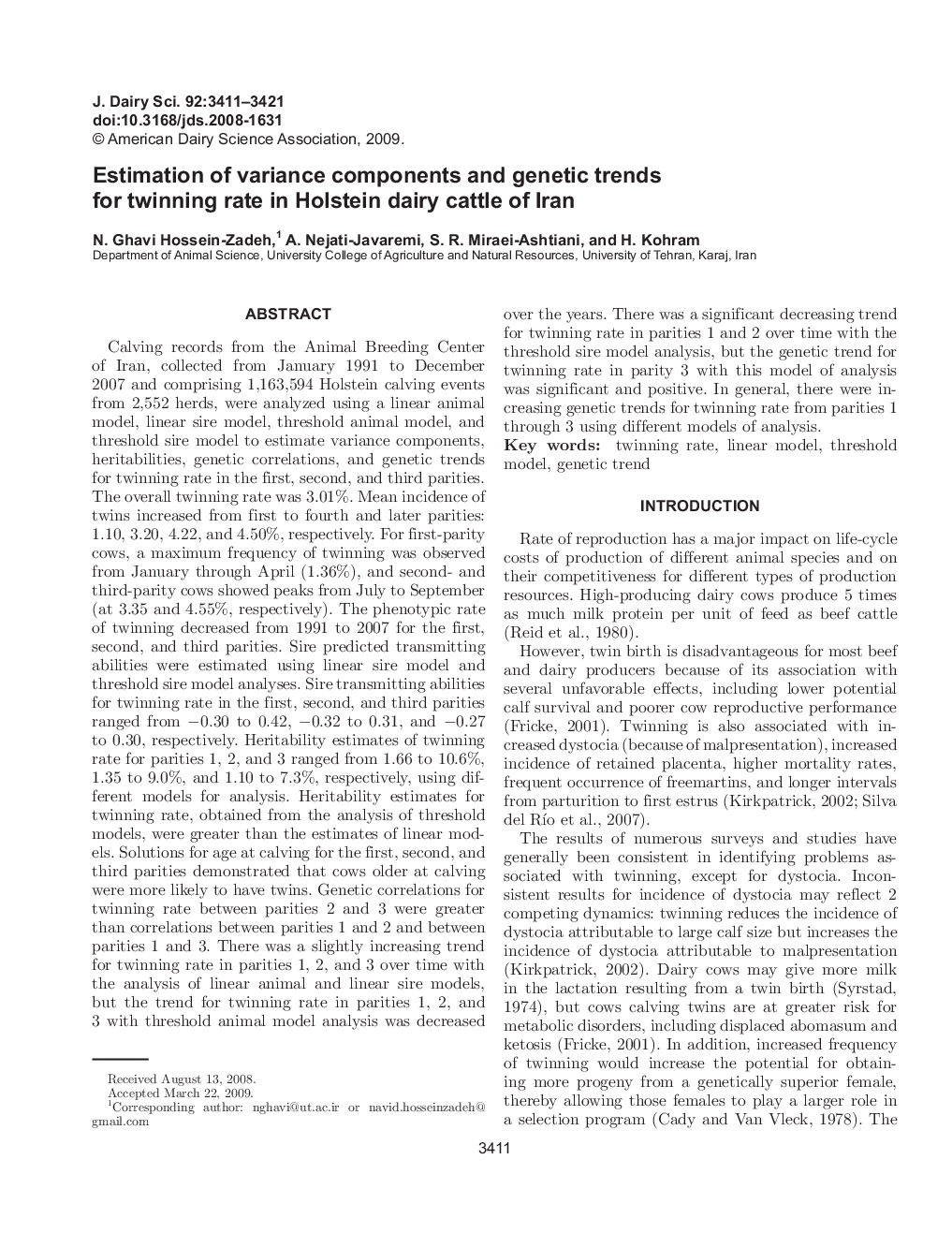| Article ID | Journal | Published Year | Pages | File Type |
|---|---|---|---|---|
| 2439708 | Journal of Dairy Science | 2009 | 11 Pages |
Calving records from the Animal Breeding Center of Iran, collected from January 1991 to December 2007 and comprising 1,163,594 Holstein calving events from 2,552 herds, were analyzed using a linear animal model, linear sire model, threshold animal model, and threshold sire model to estimate variance components, heritabilities, genetic correlations, and genetic trends for twinning rate in the first, second, and third parities. The overall twinning rate was 3.01%. Mean incidence of twins increased from first to fourth and later parities: 1.10, 3.20, 4.22, and 4.50%, respectively. For first-parity cows, a maximum frequency of twinning was observed from January through April (1.36%), and second- and third-parity cows showed peaks from July to September (at 3.35 and 4.55%, respectively). The phenotypic rate of twinning decreased from 1991 to 2007 for the first, second, and third parities. Sire predicted transmitting abilities were estimated using linear sire model and threshold sire model analyses. Sire transmitting abilities for twinning rate in the first, second, and third parities ranged from −0.30 to 0.42, −0.32 to 0.31, and −0.27 to 0.30, respectively. Heritability estimates of twinning rate for parities 1, 2, and 3 ranged from 1.66 to 10.6%, 1.35 to 9.0%, and 1.10 to 7.3%, respectively, using different models for analysis. Heritability estimates for twinning rate, obtained from the analysis of threshold models, were greater than the estimates of linear models. Solutions for age at calving for the first, second, and third parities demonstrated that cows older at calving were more likely to have twins. Genetic correlations for twinning rate between parities 2 and 3 were greater than correlations between parities 1 and 2 and between parities 1 and 3. There was a slightly increasing trend for twinning rate in parities 1, 2, and 3 over time with the analysis of linear animal and linear sire models, but the trend for twinning rate in parities 1, 2, and 3 with threshold animal model analysis was decreased over the years. There was a significant decreasing trend for twinning rate in parities 1 and 2 over time with the threshold sire model analysis, but the genetic trend for twinning rate in parity 3 with this model of analysis was significant and positive. In general, there were increasing genetic trends for twinning rate from parities 1 through 3 using different models of analysis.
